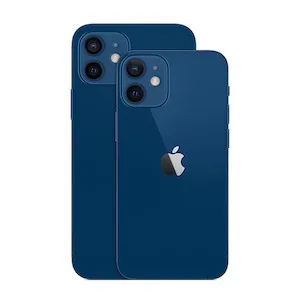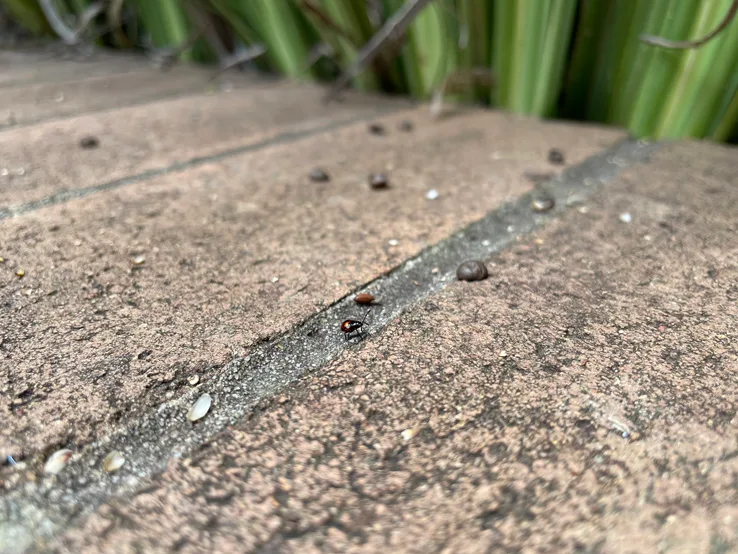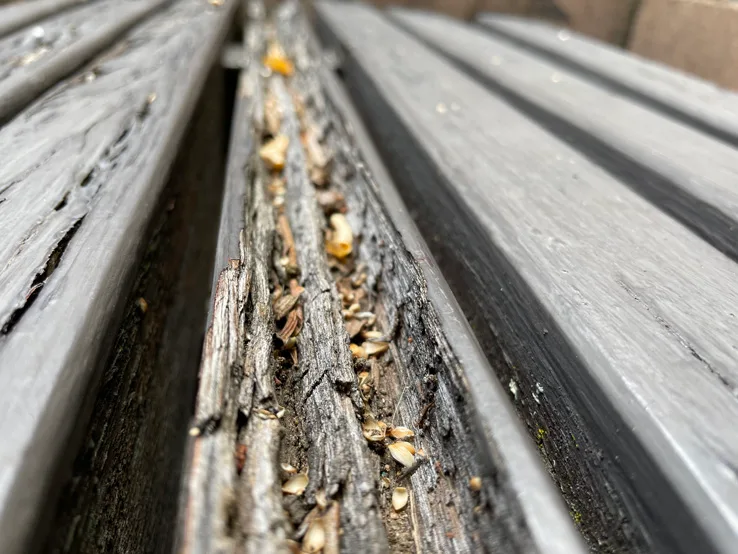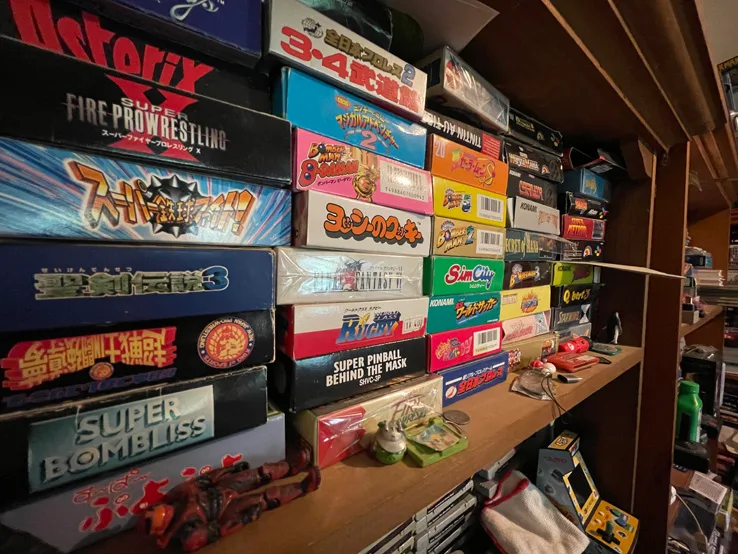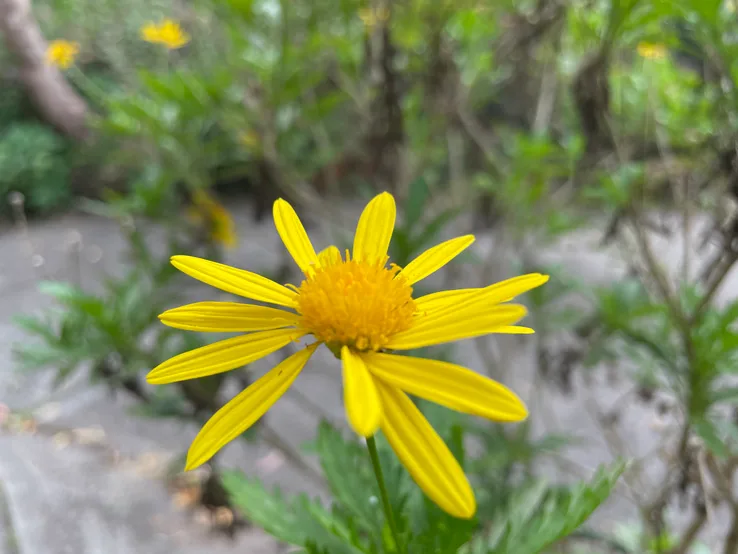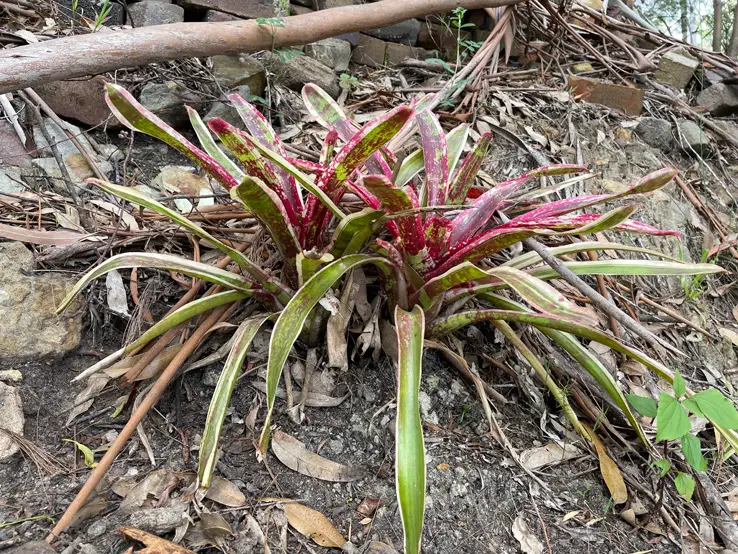Apple iPhone 12 mini review
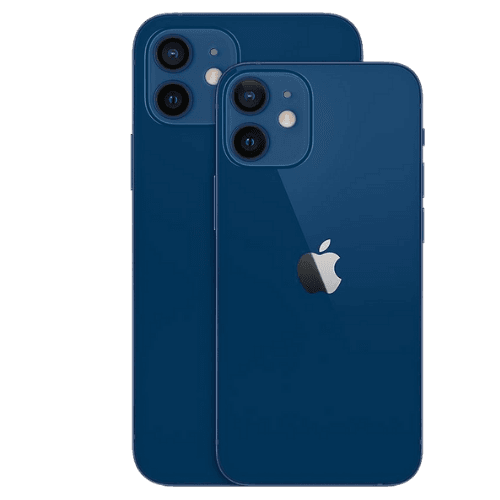
-
- Battery Score
3
- Camera Score
4
- Design Score
4
- Performance Score
4.5
- Battery Score
3
Summary
Quick verdict: Apple’s iPhone 12 mini lives up to its name, delivering plenty of power in a truly pocket-sized phone. Predictably, the price you pay is in battery life.
- Compact size
- Same cameras as the iPhone 12
- A14 Processor puts it in a class of its own
- 5G capable
- Mediocre battery life
- Small display screen for the price
- Slower Qi charging
- No mmWave support
Details
Pricing & Availability
| RRP | $0 |
| Launch date | 2020-11 |
Very few phones really define themselves with their name, but that's precisely what the iPhone 12 mini does. It's the iPhone 12 on growth-stunting hormones, making it the most powerful "small" phone money can buy.
Small is great if you don't like having a hefty phone to lug around, but that defining size does bring compromises with it, most notably in its battery endurance and charging capabilities.
Looking for the latest model? Here's our full review of the iPhone 13 Mini.
Design
Design
- 5.4-inch OLED display
- iPhone 4 design, right down to the size
- 5 colour choices
- Ceramic shield glass
- IP68 water resistance
- No charger, no headphones
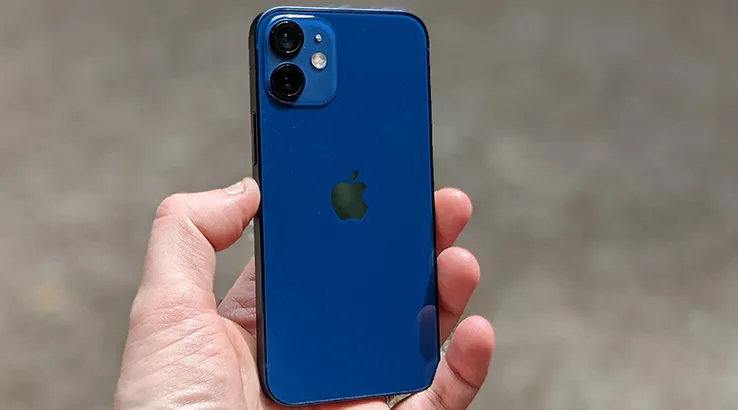
The iPhone 12 mini can't help but feel familiar. For a start, I pivoted to reviewing it fresh from the slightly larger iPhone 12, and they're both designed around the same colour schemes and design notes. Those design inspirations owe a lot to Apple's older iPhone 4 family of phones, with a relatively thick rectangular design language in play. Indeed, the iPhone 12 mini might be the most reminiscent iPhone this year, simply due to its size, which calls back to the smaller iPhones that used to be the only iPhones Apple would sell you.
Size matters for the iPhone 12 mini because it's absolutely the reason why you'd buy it. Apple ships the iPhone 12 mini in your choice of five colours – Black, White, PRODUCT(RED), Green or Blue – with a 5.4-inch OLED display that takes up most of the front of the phone, save for the very prominent top notch that incorporates the front selfie camera as well as Apple's FaceID sensors for biometric unlocking purposes.
You get the same side button array as any other iPhone 12 model, but because of the iPhone 12 mini's smaller size, the buttons feel a little larger. They're identical across the range, and presumably there's a factory somewhere in China producing them by the millions to be placed in any given iPhone body this year.
The iPhone 12 mini's 5.4-inch display features a "Super Retina XDR" display – someone at Apple's market naming department having fun again, I see – with a 2340x1080 pixel resolution. That actually gives it a slight edge in resolution over the larger iPhone 12 because when you boil the pixel count down to pixels per inch, it has 476ppi to the iPhone 12's 460ppi. Unless your name is Clark Kent and you're particularly bored, you will never spot that difference, however.
Like the other iPhone 12 models this year, the iPhone 12 mini also features Apple's new "Ceramic Shield" glass, which the company claims is good for up to 4x drop resistance compared to older iPhone models. Up to figures are by their nature rubbery, and it's not carte blanche to throw your iPhone 12 mini around for the sake of it. A week's testing with a few simulated drops and bumps didn't reveal too many issues, but I'd still suggest that you throw the iPhone 12 mini into a case as a simple and low-cost insurance method.
The iPhone 12 mini also benefits from improved water resistance, with IP68 rated resistance "good" for immersion up to 6 metres for up to 30 minutes. I've put good in quote marks there because, like the Ceramic Shield glass, this isn't something that you should press to any particular degree.
That's because Apple's warranty explicitly doesn't cover water ingress or screen shattering issues. They're tougher phones, but don't test them on that unless you're willing to wear the price of a costly repair.
The other big design change for 2020 is in the box that the Apple iPhone 12 comes in. Not that it's made from endangered orangutan hide (that I know of) but because of what you don't get. The iPhone 12 mini box is smaller because the phone is smaller, but also because Apple no longer provides headphones or a charger in the box.
Once again, I have to point out that if you do have a compatible charger with a USB-C socket on it and you want to use the supplied Lightning cable, then you're set. But if you don't, please don't just buy the cheapest charger you can find online. Electrocution is nothing to trifle with.
Camera
Camera
- Same dual 12MP cameras as the iPhone 12
- Good in low light
- Smaller body makes some photos easier to get
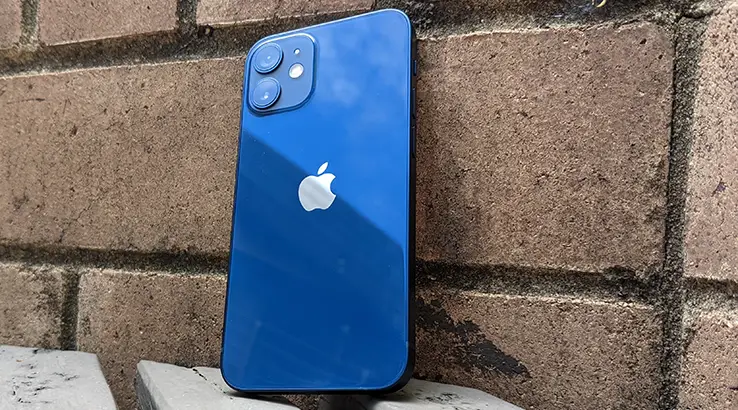
Apple's historical trend with its "cheapest" iPhones has been to strongly differentiate on camera quality, but that's not the exact story in 2020. While the very best cameras Apple is making go into the iPhone 12 Pro and especially the iPhone 12 Pro Max, the dual-lens array that you find on the back of the iPhone 12 mini is the exact same one that you'll find on the slightly more expensive and larger Apple iPhone 12.
That means you score the exact same 12MP f/2.4 ultra-wide and 12MP f/1.6 wide lens, with telephoto the notable omission. If you want telephoto in the Apple world, you have to pony up the big bucks for a model with a "Pro" suffix.
That also meant that using the Apple iPhone 12 mini for camera work felt very familiar indeed, with all of the same positive and negative points that I noted in my Apple iPhone 12 review. The big benefit here is really all about ease of use for regular everyday camera users because that's an area that Apple has paid special attention to.
While there are numerous iOS camera apps, those who just want to quickly launch the default camera app and take a quick happy snap will generally find themselves well pleased with the results.
Low-light performance has been given a big boost in the 2020 iPhone 12 range, and to test that out, I grabbed the iPhone 12 mini and the cheaper iPhone SE 2020 before heading to a local park late one night for my usual brutal photo test. The aim here isn't to grab an award-winning photo, but more to gauge exactly how much light and detail each camera can grab and what its post-processing does to those images.
The iPhone SE 2020 is based off quite old iPhone camera technology, and it shows. Here's what it could see – which, to be fair, wasn't far off what I could make out – looking over a field towards a large earth mound.
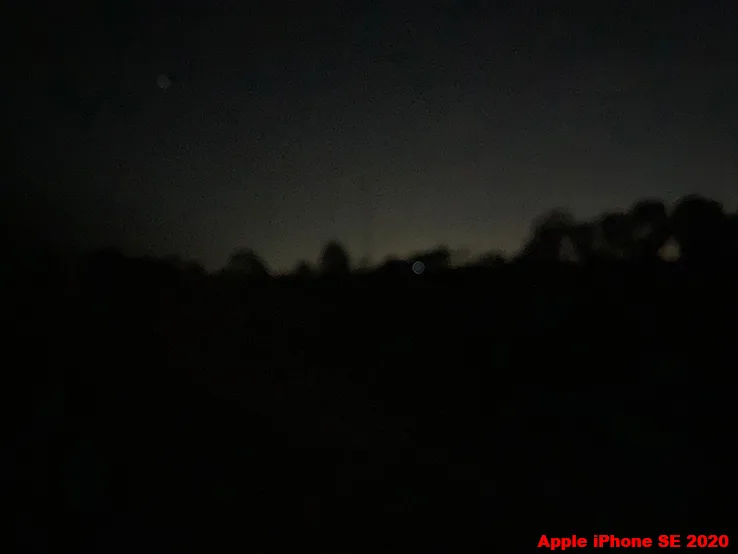
That's far from a great shot by anyone's measure. So how does the iPhone 12 mini compare?
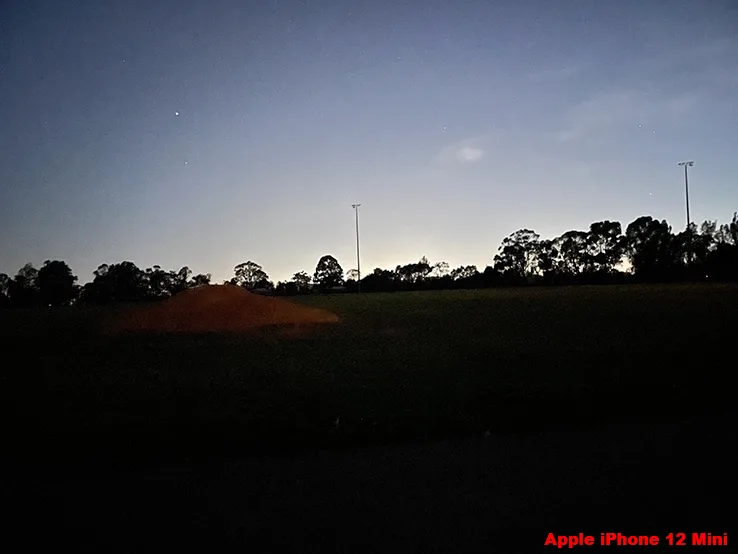
It's like the sunglasses have been taken off the lens, frankly. There are issues with that shot – if you look at the earth mound especially – but that's a solid upgrade right there. Naturally, you could expect and would get even more out of the Pro model iPhone cameras, but Apple is still honestly only playing catch-up with the efforts of its Android counterparts here.
The other factor to consider with the iPhone 12 mini's camera performance is its size, and here it's mostly a plus. Having a smaller screen does give you a smaller viewfinder, but it also means it's much easier to hold steady or use the volume buttons as camera shutters and so on. As a compact camera for everyday use, and in limited means for low-light use, the Apple iPhone 12 mini is an impressive offering.
Performance
Performance
- A14 Bionic utterly dominates for performance
- Most apps don't need that much power however
- Smaller screen means you're making less of it
- 5G, but only sub-6Ghz
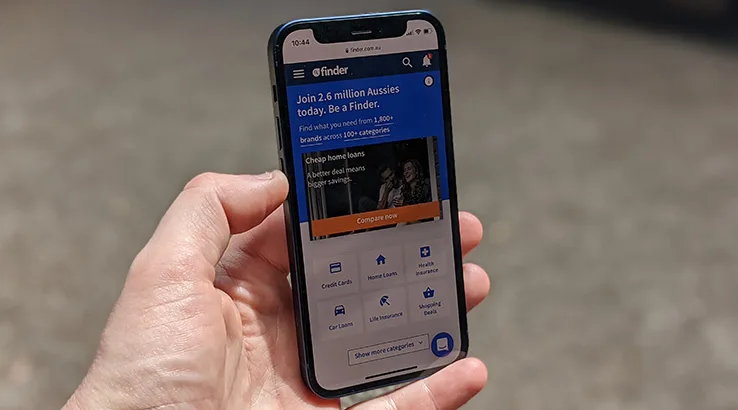
Over the history of smartphones, the smaller models have tended to cut corners when it comes to processor choices. Apple rather broke with that tradition earlier in the year with the Apple A13 Bionic-based Apple iPhone SE 2020, and it has done so again with the Apple iPhone 12 mini. Like its brethren, it runs on the Apple A14 Bionic processor. Apple gets huge benefits from being able to design both the hardware and software on its smartphones, eking out every last drop of performance, and then some.
The Apple A13 as found in last year's iPhones was already market leading, and the A14 Bionic pushes that little bit further again. It's arguably true that the iPhone buyer's market is mostly just interested in iPhones, so here's how the iPhone 12 mini compares against this year's crop, and last year's premium model as well as a representative example in the Android smartphone space.
With a common CPU, it's not surprising that the iPhone 12 mini scores well in Geekbench 5's CPU test:
In 3DMark terms, Apple's iPhone architecture isn't as good at OpenGL work, but it scores well in the newer 3DMark Wild Life test. However, we still need more comparative data points to get a better feel for that test, so stay tuned.
The really interesting comparison here is with Apple's other lower-cost – not cheap because Apple does not play in the cheap phone playground with the other children – handset this year, the iPhone SE 2020. Both are smaller handsets with a lot of processing power, but that kind of engine is only really useful if you have need of that much grunt.
Apple is, in a way, a victim of its own success because all the 2020 iPhones are frankly ridiculously powerful devices, but I'm yet to really hit a lot of use cases that truly push the A14 to its limits. It makes it a harder justification for an upgrade if you're using an iPhone that's less than two to three years old because while these are faster devices, there's not really much that you can do with them that you couldn't do with older iPhones.
There are a few exceptions, such as on-device video editing, but the smaller display of the iPhone 12 mini makes that a less compelling prospect unless you absolutely had to.
Like the other iPhone 12 models, the iPhone 12 mini is also 5G capable, although again this is strictly as a sub-6Ghz 5G handset. If you're keen on the true potential of 5G, it'd be wise to wait out another year and hope that Apple decides to bring its dual 6Ghz/mmWave handsets Down Under at that time.
Battery life
Battery life
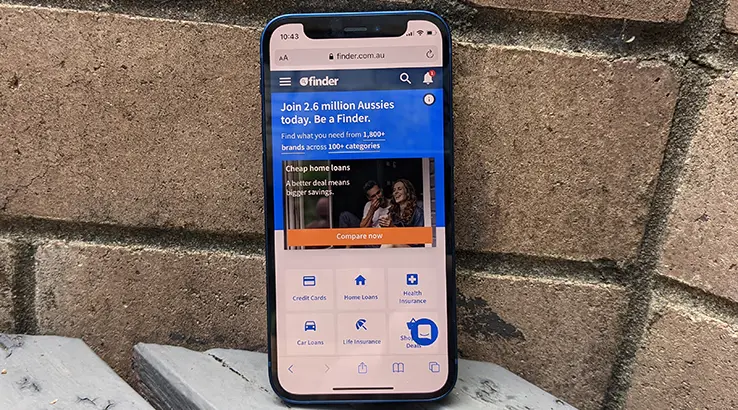
The most obvious compromise any smaller smartphone has to make is in battery capacity. Until we see significant breakthroughs in structural or chemical battery composition, the simple fact remains that if you've got less space, there's less capacity to cram batteries inside a smaller phone.
Apple never talks battery capacities, instead stating that it expects the iPhone 12 mini to last "up to 15 hours" of video playback, around 2 hours shorter than the iPhone 12. External teardowns suggest that the iPhone 12 mini is packing a 2,227mAh battery, which isn't surprising given its size, but it's well below the scope of what you'd expect from a phone priced above $1,000.
So how does the iPhone 12 mini compare? To start the comparison, I ran it through our battery rundown test, with a 100% charged phone streaming a 1080p YouTube video at maximum brightness and moderate volume for an hour. The goal here is to hit at least 90% battery remaining because under that rate is a dead giveaway of a phone that will struggle to last a single day. Keeping with the same pack of comparison phones, here's where the iPhone 12 mini sits comparatively:
It's to Apple's engineering credit that it can make such a small battery last as long as it does, but that figure doesn't suggest that Apple's 15-hour battery-life figure is going to be particularly achievable in real-world usage.
Indeed, using the iPhone 12 mini as my day-to-day phone anecdotally suggested that it might even be over-reporting itself, as it was pretty common to be running perilously low by the time the sun went down each day. Your usage type can of course vary that a lot, and it's feasible to get a day out of the iPhone 12 mini. Still, for its asking price, that should be assumed, not something you have to strive for.
Apple is clinging to its Lightning connector standard for iPhones rather grimly this year, but like the other iPhone 12 models, you no longer get a charger in the box. Instead, there's just a USB-C to Lightning cable, with the expectation that you'll have your own charger instead. It will charge at up to 20W with a compatible charger or via Qi with support for Apple's new magnetic "MagSafe" charging standard.
There are some caveats again to the iPhone 12 mini's smaller stature when it comes to wireless charging. Where the rest of the iPhone 12 family can handle Qi charging at up to 15W, the iPhone 12 mini taps out at just 12W.
That smaller size also makes it harder to place correctly on a lot of wireless charging pads, especially those that are vertically oriented. Even Apple's own MagSafe charger can be tricky to place correctly on the iPhone 12 mini, although the MagSafe Wallet is a direct match for the back of the phone.
Should you buy the Apple iPhone 12 mini?
- Buy it if you want a truly compact and powerful iPhone.
- Don't buy it if you want great battery life or camera performance.
The iPhone 12 mini is small, and that diminutive size very much defines its value proposition. It's an incredible bit of engineering to get the same essential engine running all the way from the iPhone 12 Pro Max down to the iPhone 12 mini, but it's not without its compromises.
Battery life and charging capability are the obvious and most pertinent issues, but there's also the utility of that smaller screen matched up with the power of the A14 Bionic chip.
If you're in the market for a new iPhone, I'd still argue strongly that the iPhone 12 is the model that most folks should buy, outside the pro camera crowd who will gravitate towards the iPhone 12 Pro Max. The iPhone 12 mini is attractive for its smaller size and lower price point, but it's not so remarkably cheap as to warrant a must-buy status on its own.
Pricing and availability
Specifications
Display
Camera
Physical Dimensions
Connectivity
Power, storage and battery
Device features
Images: Alex Kidman
More Finder reviews
-
Why I keep coming back to Google’s Pixel Watch 4 (you might disagree)
17 Dec 2025 |
-
The Pixel 10 is the perfect phone for everyday use – here’s why
16 Dec 2025 |
-
Apple iPhone 17 review – Is it the phone of the year?
16 Dec 2025 |
-
iPhone Air review – It’s not what I expected
12 Dec 2025 |
-
iPhone 17 Pro and Pro Max review – At their peak
30 Oct 2025 |
Sources
Your reviews
Alex Finder
Senior editor
You are about to post a question on finder.com.au:
- Do not enter personal information (eg. surname, phone number, bank details) as your question will be made public
- finder.com.au is a financial comparison and information service, not a bank or product provider
- We cannot provide you with personal advice or recommendations
- Your answer might already be waiting – check previous questions below to see if yours has already been asked
Finder only provides general advice and factual information, so consider your own circumstances, or seek advice before you decide to act on our content. By submitting a question, you're accepting our Terms Of Service and Finder Group Privacy & Cookies Policy.
This site is protected by reCAPTCHA and the Privacy Policy and Terms of Service apply.

